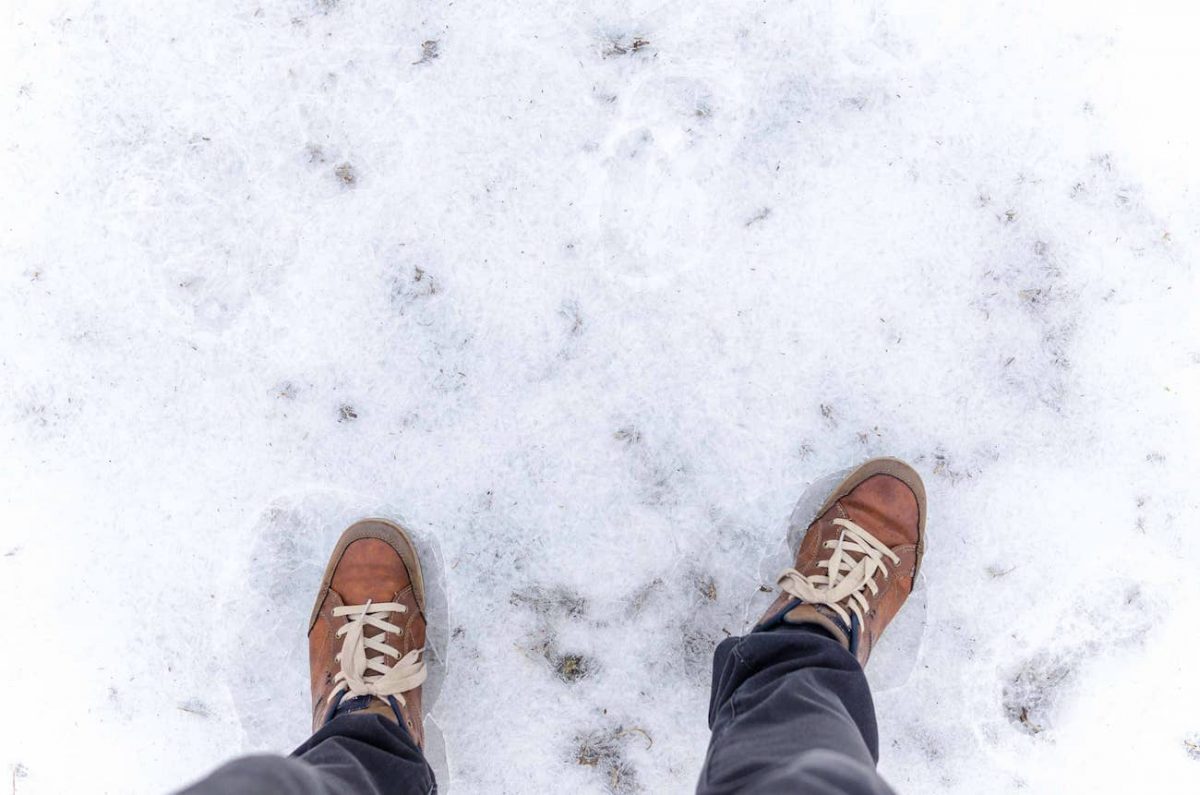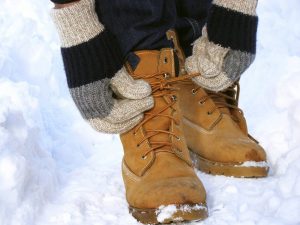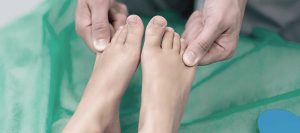
In the following simplified guide, we delve into the chilling topic of frostbite, specifically focusing on its symptoms and treatments when it affects the feet. Frostbite can be a serious condition, and recognizing the signs early on is crucial. Read on as we explore the symptoms and discuss effective treatments to mitigate the effects of frostbite and promote healing.
Here is sunny South Florida, temperatures rarely drop to the frigid levels they do elsewhere in the country.
This means that many folks may not be prepared for cold temperatures on those rare occasions they do come our way or when traveling to colder climates.
Failing to arm yourself against cold weather won’t just leave you shivering or chattering your teeth.
It can cause permanent damage and even the loss of a limb or extremity if you develop the condition known as frostbite.
What Exactly is Frostbite?
Frostbite is what happens when skin and underlying tissues freeze.
That freezing occurs when not enough blood flows throughout the body, and extreme cold can dramatically decrease blood flow.
The reason frostbite occurs most often in hands, feet, fingers, and toes is that they are the farthest away from your body’s core and blood has to travel a longer distance to get to these extremities.
If blood isn’t flowing well, it will never get there. Since the nose, ears, cheeks, and chin, are often left exposed, they also are at risk for the development of frostbite.
The length of time it takes for frostbite to develop in freezing temperatures depends on the severity of the conditions outside and what protection, if any, is being worn to shield the skin from exposure.
In extreme cold and wind, frostbite can start to develop as quickly as five minutes.
Severe, advanced cases of frostbite make their way through all skin layers into the tissue below.
The numbness that develops at this stage may cause the loss of any sensations of cold or pain in the affected areas.
This often causes people to underestimate or ignore the extreme damage that being inflicted on their body.
Joints and muscles may stop functioning, and ultimately, frostbite can cause gangrene – the death of tissue and muscles – which can result in amputation to prevent infection from spreading.
What Are The Symptoms Of Frostbite?
Frostbite first makes itself known through a less serious condition called frostnip.
Exposed skin can turn red, sore, and have a prickly, pins-and-needles feeling. You may also begin to sense some numbness in the affected areas.
If you experience any of these, you should seek warmth and shelter as soon as possible.
During the next, intermediate state of frostbite, skin becomes hard, may look shiny or waxy, and can turn pale or white. The numbness may increase as well.
Severe, advanced frostbite makes its way through all layers of the skin into the tissue below.
The numbness that occurs at this stage may make you lose any sensations of cold or pain in the affected areas, which in turn can cause you to underestimate or ignore the extreme damage that is being done.
Your joints and muscles may stop working, and the discoloration can become more pronounced.
When frostbite is at its most extreme, it can kill tissue and muscles – gangrene – which can result in amputation to prevent infection from spreading.
How Do You Treat This Condition?
If you believe that you may be getting frostbite, get inside and out of the cold and seek medical attention as soon as you can.
Soak your hands or feet in warm water (between 104-107 F).
Make sure the water temperature is not too hot, as the numbness and loss of sensation could prevent you from feeling any burning or scalding.
As your body and skin warm, you may experience pain and blistering as well as changes in the color of the affected skin.
How Do You Prevent It From Occurring?
The key to avoiding frostbite in cold weather is to protect yourself with the proper clothing and accessories.

If you are heading north during the winter or the temperature goes south down here, keep these functional fashion tips in mind as you venture out into the cold:
- Wear layers of loose clothing, including a layer closest to your skin made of a material that will keep you dry.
- Make sure your outer garments are windproof and waterproof.
- Wear a hat, headband, or earmuffs that completely cover your ears.
- Go with mittens instead of gloves
- Wear wool socks over a pair of moisture-resistant socks and wear insulated and waterproof shoes or boots.
- Get out of wet clothing as quickly and safely as possible.
Jaws Podiatry – Your Foot and Ankle Specialists
The experienced podiatrists at JAWS Podiatry in Hollywood, Florida can help you keep your feet healthy and get you get back on your feet when problems arise.
We are a growing group of exceptional professionals who offer the highest degree of care in a welcoming, comfortable environment.
Please call us today at (954) 922-7333 or contact us online to schedule a consultation.
- The Life-Changing Power of Cosmetic Foot Surgery - February 27, 2023
- What Are The Most Common Pediatric Foot Conditions? - October 5, 2020
- 4 Important Things To Know Before Having Foot Surgery - September 21, 2020



